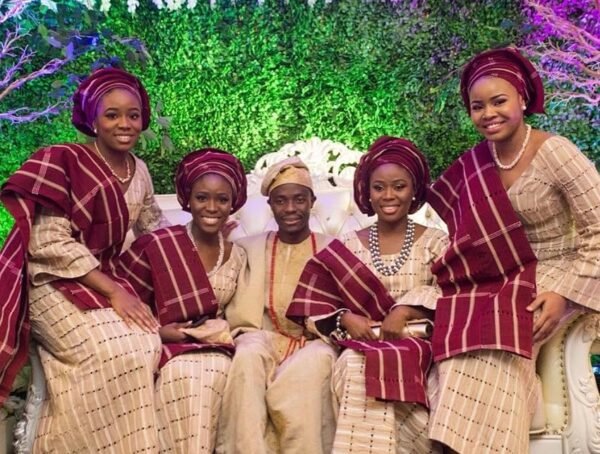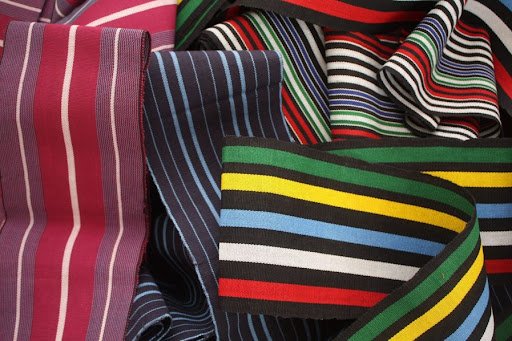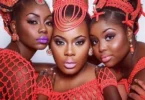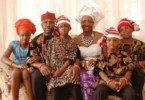
Yoruba fashion is a quintessential component of Yoruba culture, one of dynamic creativity, history, and identity. Originally from southwestern Nigeria, the Yoruba people are very well known for their taste in loud and highly symbolic dress sense, which surpasses the aesthetic function of clothing and gives meaning to their values, beliefs, and social hierarchy. Yoruba fashion is not just visual; it is a cultural narrative sewn into cloth.
This article explores the very essence of Yoruba clothing, its traditional constituent elements, symbolic meanings, and how it has continued to evolve up to contemporary times.
1. The Foundations of Yoruba Fashion

In other words, traditional Yoruba attire is distinguished by the use of native and hand-woven materials, among which is aso oke, adire, and ankara. These materials are highly appreciated not only for their beauty but also for the cultural and historical stories they carry.
- Aso Oke: This is a hand-woven cloth used in designing exalted dresses for special occasions. It is usually reserved for weddings, festivals, and ceremonies involving chieftaincy.
- Adire: This locally developed tie-dyed fabric features intricate patterns that are characteristic of each maker, which is why it’s a staple for both everyday wear and special-occasion attire.
- Ankara: Though of African-print inspiration, ankara has become a staple in Yoruba fashion, blending modernity with tradition.
These textiles form the base of Yoruba dressing, a canvas upon which many styles and designs have stood the test of time.
2. Key Elements of Yoruba Traditional Attire
Yoruba fashion features a variety of garments, each with its distinct style and cultural significance.
- For Men
- Agbada: A flowing robe often worn over a matching tunic and trousers (buba and sokoto), agbada signifies prestige and is often seen at formal gatherings.
- Fila: The Yoruba cap, typically made from aso oke, completes the ensemble and serves as a marker of cultural pride and masculinity.
- Dansiki: A loose, comfortable garment often worn casually, dansiki reflects the relaxed yet elegant aspect of Yoruba fashion.
- For Women
- Iro and Buba: This is a very classic combination of the wrapped skirt, which goes by the name iro, and a loose-fitting blouse called buba.
- Gele: The head tie is always a fashion statement and is intricately styled to show status and personality by Yoruba women.
- Ipele: An ornamental Shawl, usually worn over the shoulder or tied around the waist, adds a touch of elegance.
All these garments are complemented by accessories such as beads, bangles, and necklaces that enhance their cultural value even further.
3. Symbolism in Yoruba Fashion
Yoruba clothing is full of symbolism and, therefore, an important avenue of cultural expression.
- Identity and Status: The fabric, color, and design chosen are often pointers to the social standing, wealth, and role that a person holds within their community; for instance, brightly colored aso oke might be set aside for royalty or high-ranking persons.
- Context-Based Dressing: Yoruba dressing is context-based. For example, whites are always used in the case of religious or spiritual ceremonies as a sign of purity and innocence.
- Storytelling through Patterns: Such intricate patterns on fabrics like adire relay stories or show proverbs—the visual representations of Yoruba philosophy and history.
Fashion in Yoruba culture depicts more than just clothes; it is a medium for the expression of identity, values, and common heritage.
4. Yoruba Fashion and Gender Roles
Yoruba fashion reflects traditional gender roles while celebrating individuality and creativity.
- Men: Yoruba men’s fashion emphasizes authority and leadership, with styles such as agbada symbolizing strength and dignity.
- Women: Women’s attire highlights elegance and nurturing qualities. The elaborate styling of gele, for instance, allows women to showcase their artistry and personality.
The balance of tradition and modernity in Yoruba fashion ensures that both men and women can express themselves while respecting cultural norms.
5. Yoruba Fashion in Ceremonies and Festivals
Fashion in Yoruba ceremonies and festivals is central, be it in the honor of deities, ancestors, or other important life events.
- Weddings: Yoruba weddings are a veritable feast of fashion where couples and guests alike don attires coordinated with aso ebi. Aso ebi (family cloth) engenders a unity, a type of communal identity.
- Ceremonial Chieftaincy: Traditional rulers and chiefs will be clad in resplendent agbada and crowns worthy of their office and the great culture of the Yoruba.
- Festivals: During events like the Osun-Osogbo Festival, participants wear specific colors and patterns that align with the spiritual significance of the occasion.
Through these celebrations, Yoruba fashion becomes a bridge connecting the past with the present.
6. The Evolution of Yoruba Fashion
Although traditional attire is a base to Yoruba culture, modern influences have crept in to bring new dynamics into Yoruba fashion.
- Modern Adaptations: Designers now fuse the traditional aso oke fabrics with modern cuts and styles to make outfits that would appeal to the young generation.
- Global Influence: The style of the Yoruba has gone international, and celebrities and designers have been seen displaying parts of their dressing on international platforms.
- Sustainability: The use of local and eco-friendly materials in Yoruba fashion provides a strong life cycle with global trends in sustainable fashion.
All those changes have kept Yoruba fashion dynamic and continue to make it relevant between tradition and modernity.
7. Cultural Significance of Yoruba Fashion
Yoruba fashion goes beyond aesthetics to embody the values and identity of the Yoruba people. It serves as:
- A Marker of Heritage: Fashion preserves Yoruba history and traditions, passing them down to future generations.
- A Tool for Unity: Aso ebi promotes a sense of belonging and solidarity during communal events.
- A Platform for Expression: From the bold patterns of adire to the intricate styling of gele, Yoruba fashion allows individuals to express their creativity and personality.
Conclusion
The most beloved Yoruba dishes highlight the Yoruba people’s inventiveness, ingenuity, and rich cultural legacy. From the cosy embrace of pounded yam and egusi soup to the smokey thrill of party jollof rice, these foods represent a lively heritage that thrives in both traditional and modern settings. Yoruba food is a celebration of life, love, and community that goes beyond simple sustenance. Savouring these dishes enables one to feel the richness and warmth of Yoruba culture, which has persisted over time.




